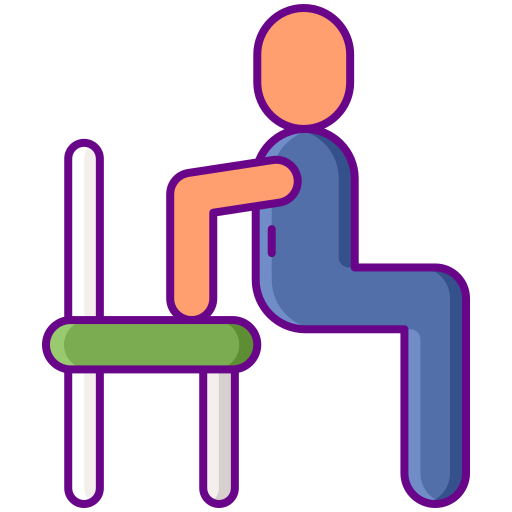A focus on the triceps, joints, and full-body workouts.
As a fitness instructor, it's important for me to know how the different muscles and bones in the body work together to create movement. One of the key muscle groups that I always emphasize in my workouts is the triceps, which are located at the back of your upper arms. These muscles are responsible for elbow extension and stabilization, meaning they help you push things away from your body and keep your arms steady when you need to hold something in place. But the triceps don't work in isolation. They collaborate with other muscles and bony landmarks, such as the acromion (the bony prominence at the top of your shoulder blade) and your hand, to stabilize the shoulder joints. The shoulder is one of the most complex joints in the body, with a wide range of motion and multiple muscles and ligaments involved in its stability. By strengthening your triceps, you can improve your overall shoulder function and reduce your risk of injury.

To understand how the triceps and other muscles work, it's also important to know about the bones and joints that they attach to. Bones are not just passive structures that provide support for the body. They contain many nerve endings which tell the brain how a joint is being used, and they can move in a variety of ways depending on the muscles and ligaments that are connected to them. The joints themselves are also complex structures with multiple components, such as cartilage, synovial membrane, and ligaments, that enable smooth movement and protect the bones from wear and tear. In the case of the knees and elbows, for example, the main feature is the synovial membrane that lines them. This membrane produces synovial fluid, which lubricates the joint and reduces friction between the bones. The cushion between the thigh bone (femur) and the shin bone (tibia) is provided by the meniscus, a crescent-shaped structure made of fibrocartilage.
💪
The knee joint is also supported by the quadriceps and hamstring muscles, which help to flex and extend the leg, and the patella, a small bone that acts as a fulcrum for the quadriceps tendon. Your brain sends information to your muscles all the time telling them to move, and this information contains details of what each muscle is supposed to do. In your shoulders, for example, your brain tells your muscles what to do and to which part of your body to move. Your arms and legs are moved by your muscles, which are activated by nerve impulses that tell your brain to move parts of your body. In addition to the triceps, the upper arm is made up of other important muscles, such as the deltoid (shoulder muscle), biceps (front of upper arm), and brachialis (deep muscle that flexes elbow).
💪🏿
Understanding the structure and function of your muscles and bones can help you perform exercises more safely and effectively. For example, if you want to strengthen your triceps, you can do exercises like triceps dips, push-ups, or skull crushers. But it's also important to remember that your muscles and bones are interconnected, and strengthening one muscle can affect the function of others. That's why a well-rounded workout routine should include exercises for different muscle groups and joints, as well as stretching and mobility work to maintain joint health and flexibility. Jumping rope is a great example of an exercise that can benefit multiple parts of your body, from your lower back and legs to your shoulders and arms. By jumping rope with a training jump rope, you can improve your coordination, cardiovascular endurance, and muscle strength and flexibility. Jumping rope is a low-impact exercise that can be done almost anywhere, giving you no excuse to do it right now!
👶